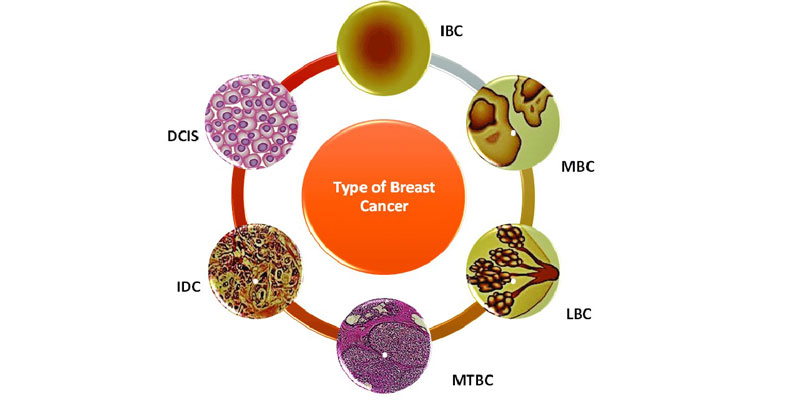Breast cancer is not just a single disease. It comes in various forms, each with distinct characteristics, which influence treatment and prognosis. Below are some of the main types of breast cancer:
- Ductal Carcinoma In Situ (DCIS):
DCIS is a non-invasive breast cancer where abnormal cells are found in the lining of the milk ducts but have not spread outside the ducts. Since it is contained, it is considered an early form of breast cancer, and the chances of curing it are high when treated promptly.
- Invasive Ductal Carcinoma (IDC):
IDC is the most common type of breast cancer. It starts in the milk ducts but breaks through the duct wall and invades surrounding breast tissue. It can also spread (metastasize) to other parts of the body.
- Invasive Lobular Carcinoma (ILC):
This type of breast cancer begins in the milk-producing lobules and can also spread to other parts of the body. It tends to be harder to detect through imaging like mammograms.
- Triple-Negative Breast Cancer:
This aggressive form of breast cancer does not have estrogen, progesterone, or HER2 receptors, making it more difficult to treat with hormone therapy. However, new research and therapies are being developed to address this subtype.
- HER2-Positive Breast Cancer:
HER2-positive breast cancer has higher levels of a protein called HER2, which promotes the growth of cancer cells. Targeted therapies are available that specifically attack this protein, improving the prognosis for patients.
- Inflammatory Breast Cancer:
A rare but aggressive type, inflammatory breast cancer, causes the breast to appear swollen and red due to blocked lymph vessels. Immediate treatment is necessary for this form, often involving chemotherapy, surgery, and radiation.
- Metastatic Breast Cancer:
Also called Stage 4 breast cancer, this type has spread to other parts of the body such as the bones, liver, lungs, or brain. While not curable, treatments are available to manage the disease and improve the quality of life.

